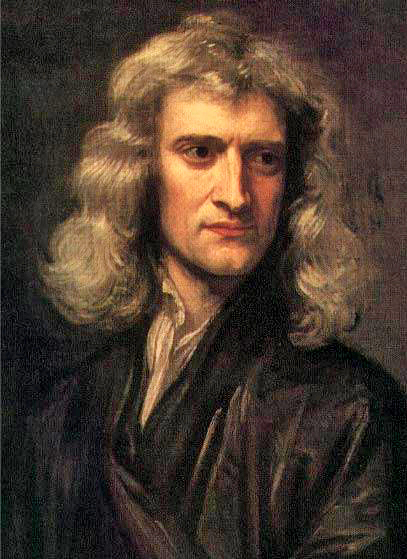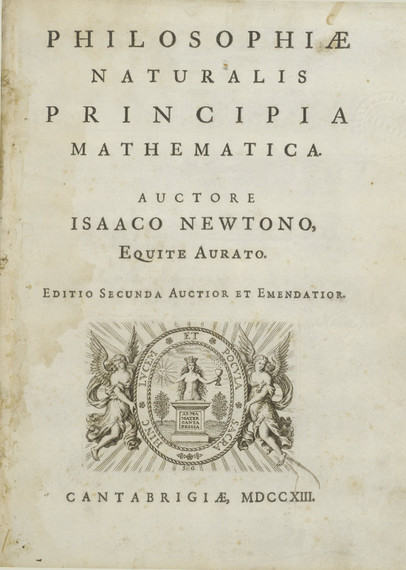In his memoirs of Sir Isaac Newton's (Fig. 1) life, William Stukely, a physician who was Newton's personal friend, tells the story that has become legendary in the history of science:
[O]n 15 April 1726 I paid a visit to Sr. Isaac, at his lodgings in Orbels buildings, Kensington: din'd with him, & spent the whole day with him, alone. ... [A]fter dinner, the weather being warm, we went into the garden, & drank thea under the shade of some appletrees, only he, & myself. [A]midst other discourse, he told me, he was just in the same situation, as when formerly [in 1666, when Newton returned home from Cambridge because of the plague], the notion of gravitation came into his mind. "[W]hy should that apple always descend perpendicularly to the ground," thought he to him self: occasion'd by the fall of an apple, as he sat in a comtemplative mood: "[W]hy should it not go sideways, or upwards? but constantly to the earths centre?"
Figure 1. Portrait of Sir Isaac Newton by Sir Godfrey Kneller. (Image in the public domain.)
Thus apparently started Newton's quest for something unprecedented in science: the formulation of a universal unification of forces. Newton eventually managed to demonstrate that the force that held the Moon in its orbit around the Earth, and the planets in their motions around the Sun, was one and the same as the force that caused apples to fall. In a memorandum written around 1714, Newton described that happy moment when he "compared the force requisite to keep the Moon in her orb with the force of gravity at the surface of the Earth; and found them answer pretty nearly."
In the remarkable penultimate paragraph of his celebrated Principia (Fig. 2), the book in which he introduced his law of universal gravitation, Newton clearly described what he was unable to achieve:
Hitherto we explained the phenomena of the heavens and of our sea [referring to tides] by the power of gravity, but have not yet assigned the cause of this power. ... I have not been able to discover the cause of those properties of gravity from phenomena, and I frame no hypotheses; for whatever is not deduced from the phenomena is to be called an hypothesis; and hypotheses, whether metaphysical or physical, whether of occult qualities or mechanical, have no place in experimental philosophy.
Figure 2. The frontispiece of the second edition of the Principia, which appeared in 1713. (Reproduced with permission from the Special Collections at the Milton S. Eisenhower Library at Johns Hopkins University.)
In his book Opticks, which he wrote in 1675 but only published in 1704, Newton even anticipated the existence of short-range nuclear forces:
I had rather infer from their cohesion [of atoms], that their Particles attract one another by some Force; which in immediate Contact is exceedingly strong.
He thereby speculated on the existence of a force that dominates over gravity, electricity, and magnetism in the shortest distances.
Still, in his manuscript "Principles of Philosophy," Newton wrote:
To explain all nature is too difficult a task for any one man or even for any one age. Tis much better to do a little with certainty and leave the rest for others that come after you.
The Principia was published in July 1687. Newton did not know the value of the gravitational constant G that appears in his law of universal gravitation (basically representing the strength of gravity). That constant was measured for the first time 71 years after Newton's death, by Henry Cavendish. Today, 327 years after the publication of the Principia, we still have not found a theory that would unify gravity with all the other forces of nature. The arduous quest that Newton initiated continues!

